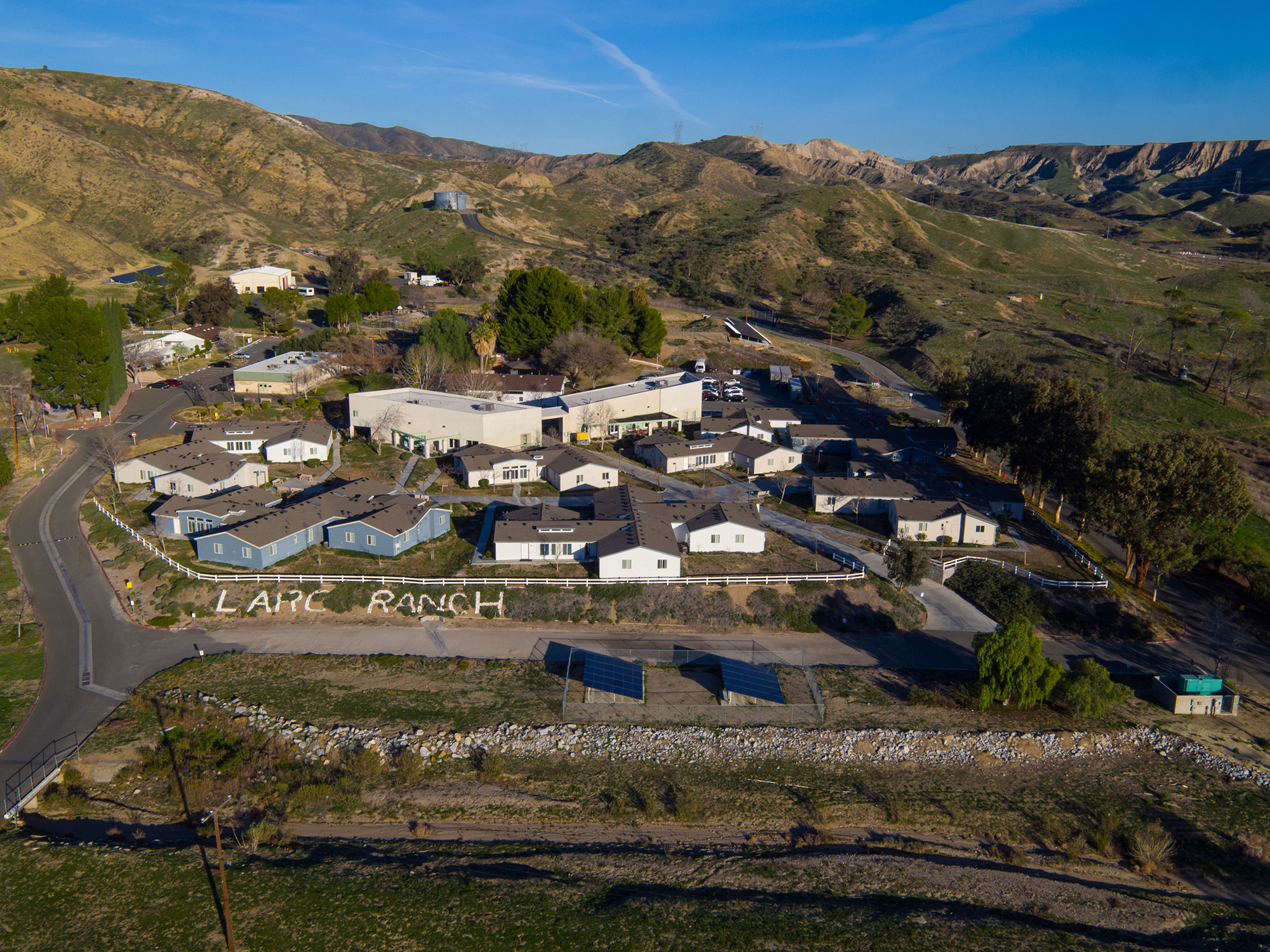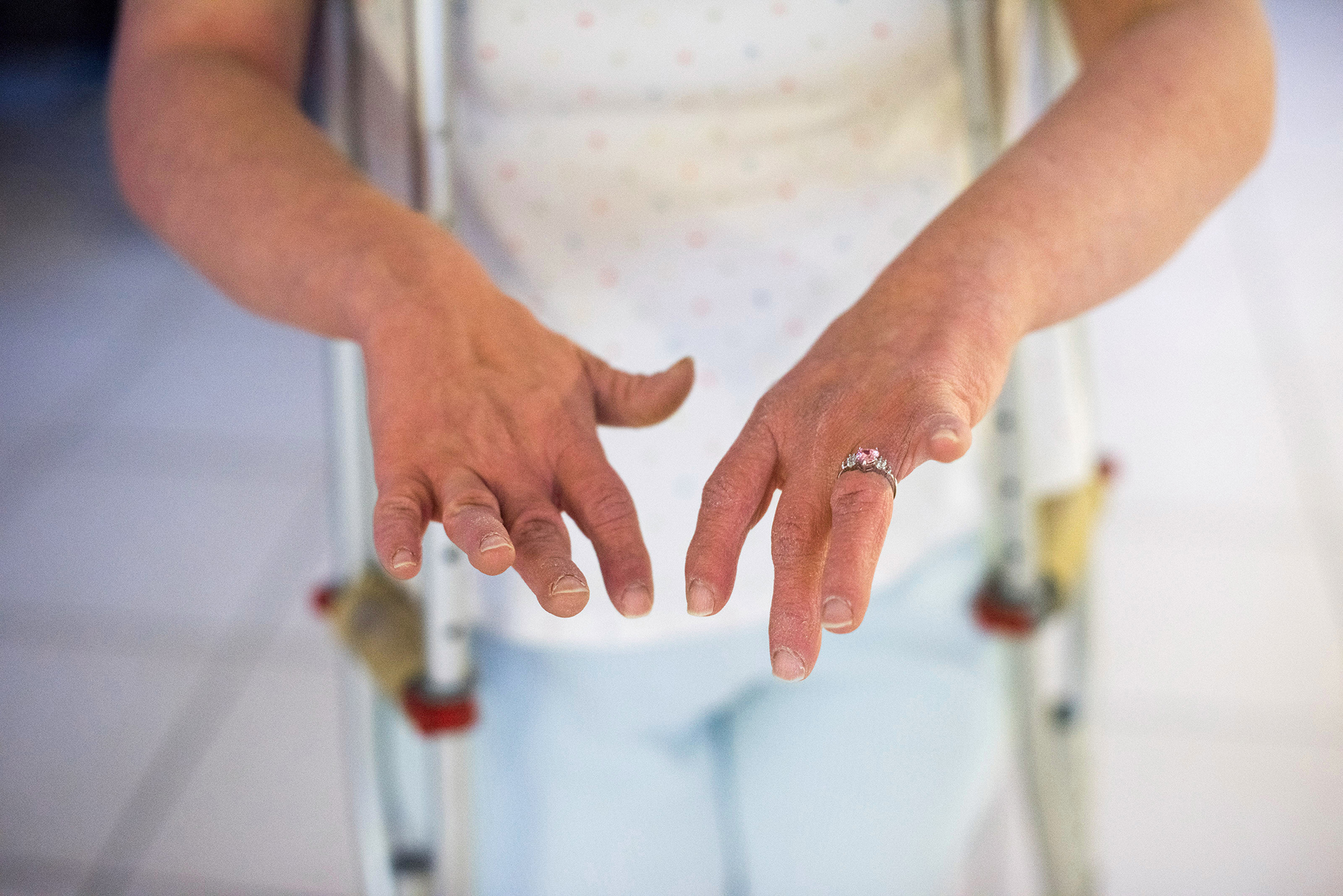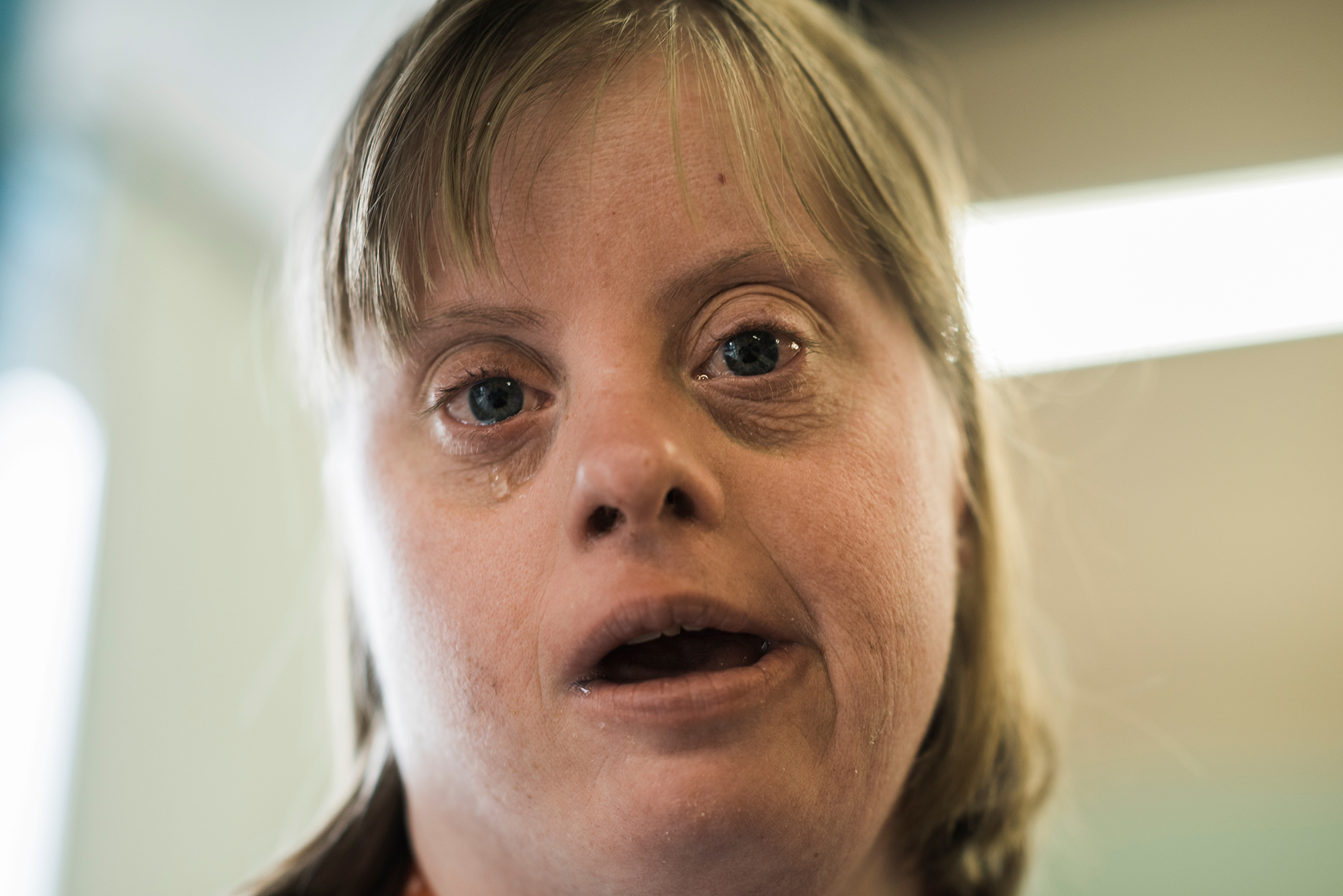Love the One You’re With
Outside of Los Angeles, at the foot of the Saugus Mountains, is the Los Angeles Residential Community (LARC) Ranch of adjacent group homes for developmentally disabled adults. Debbie, age 51; Barry, age 59; Krysta, age 24; and Nathanial, age 28 live in private rooms in communal homes. During the day, Debbie, Barry, Krysta and Nathaniel work together doing manual tasks designed to keep them mentally engaged. Many times a week, the staff takes Debbie, Barry, Krysta and Nathaniel to restaurants, stores and parks. Out of 100 participants, some have formed relationships and sit with their partner every day. A few are married couples, while others are in long-term commitments like Debbie and Barry. Some have lost love. Some struggle with accepting that a relationship is over and wait, hoping for reconciliation, while others find new partners.
Debbie and Barry are sometimes in conflict over misunderstandings and distractions. Barry expresses feeling powerless when Debbie becomes emotional and he is unable to fix the situation. He describes, “I want to do something for her when she’s upset, but I can’t.” Sometimes when one might want to be alone, the other wishes for closeness. Nevertheless, regardless of the circumstance, the day ends with Debbie tapping Barry on the arm and saying, “I love you,” and Barry confirming that Debbie is “the only one for me.” Debbie and Barry formed their relationship thirty-one years ago at a daycare program for developmentally disabled adults in the San Fernando Valley, north of Los Angeles. In hindsight, Debbie describes, “I had nobody. He had nobody.” Twenty-one years later, when Barry’s mother decided to place him at LARC Ranch, Debbie asked her family to let her live there in order to be with Barry.
Krysta and Nathaniel met when they moved to LARC Ranch. They met at a workshop and fell in love, and Nathaniel proposed to Krysta and hoped that, with her family’s permission, they would marry. After three years, the relationship ended and they are now friends. These relationships question the nature of romantic ideals as social construct and raise the question of how these individuals form their ideas about love and attachment. I am drawn to document intimate relationships within marginal communities. I was in search of subjects who readily showed vulnerability and embraced their emotions. Debbie, Barry, Krysta and Nathaniel hold no artifice. I wanted to observe what it looks like for people who display authentic selves to interact romantically. Romance is tainted with both personal desire and altruism; I endeavored to see if these couples mastered the balance or if this balance is a struggle.




















